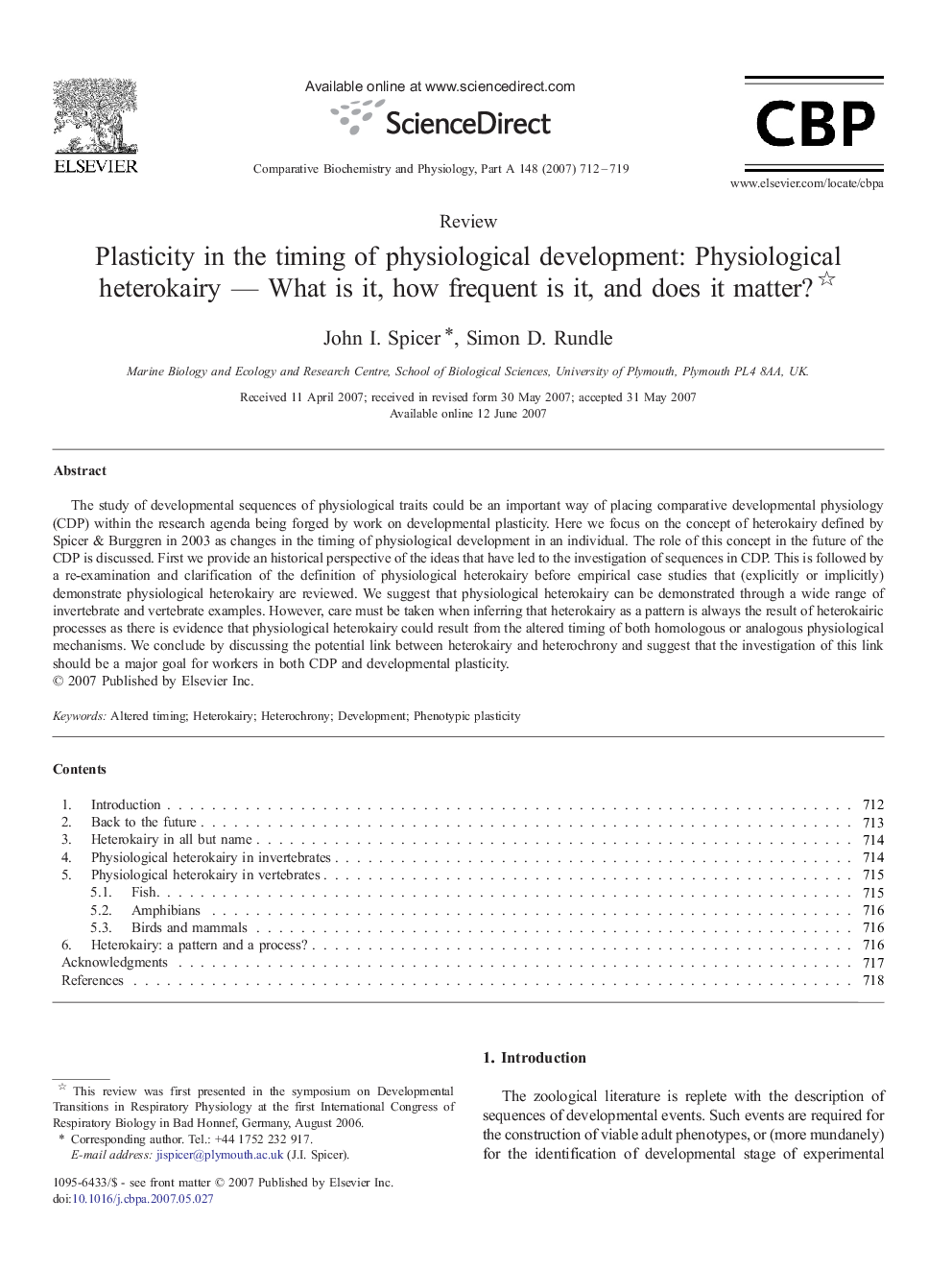| Article ID | Journal | Published Year | Pages | File Type |
|---|---|---|---|---|
| 1974063 | Comparative Biochemistry and Physiology Part A: Molecular & Integrative Physiology | 2007 | 8 Pages |
The study of developmental sequences of physiological traits could be an important way of placing comparative developmental physiology (CDP) within the research agenda being forged by work on developmental plasticity. Here we focus on the concept of heterokairy defined by Spicer & Burggren in 2003 as changes in the timing of physiological development in an individual. The role of this concept in the future of the CDP is discussed. First we provide an historical perspective of the ideas that have led to the investigation of sequences in CDP. This is followed by a re-examination and clarification of the definition of physiological heterokairy before empirical case studies that (explicitly or implicitly) demonstrate physiological heterokairy are reviewed. We suggest that physiological heterokairy can be demonstrated through a wide range of invertebrate and vertebrate examples. However, care must be taken when inferring that heterokairy as a pattern is always the result of heterokairic processes as there is evidence that physiological heterokairy could result from the altered timing of both homologous or analogous physiological mechanisms. We conclude by discussing the potential link between heterokairy and heterochrony and suggest that the investigation of this link should be a major goal for workers in both CDP and developmental plasticity.
